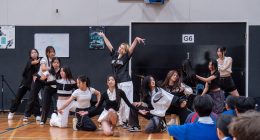It would certainly be easy to believe that literacy rates are plummeting across the nation simply due to modern-day technology. However, the reality is far more complicated, with numerous factors involved. Literacy rates—the level at which children and youth can read and write—can be impacted and changed for a plethora of different reasons. While this topic may be boring to some, its effects can be felt reverberating through society today.
Crisis: Society Poses Many Benefits to the Literate
As children enter the stage known as young adulthood, fewer 15-year-olds have been reported to enjoy reading as much as they used to*. In order to understand the significance of this qualitative statement, we must look at the numbers. A staggering 35.4% of these students struggle to read and write**. With the increasingly literacy-dependent nature of our information-rich society, this becomes severely alarming.
Research tells us that there is a direct correlation between positive experiences with literature and higher levels of engagement in the classroom. Moreover, literate individuals tend to enjoy better lifestyles and well-being and live longer. This begs the question of what contributes to this consistent decline.
The Question of Why?
Although most of the blame has been placed on increased reliance on technology and social media, the deviation away from books occurs due to a variety of factors. This affects youth from all socioeconomic areas. Disruptions to learning, exemplified by events such as COVID-19, play a huge part in the future of literacy rates, which trickle from primary to secondary school and beyond. This brings us to the deep, dark chasm of disparity—the discussion of poverty versus privilege. But even when we take both gender and socio-economic status out of the equation, the result is clear…
A decline in the willingness to read for pleasure is impacting literacy development. This tells us that there is something intrinsically wrong with the way we approach reading.
The Desire to Read for Pleasure: The False Narrative of “I only read if I have to”
Do you read for fun?
While some may simply brush the question off with a quick “I read the required texts for the school curriculum” or “I don’t have time,” reading for pleasure may play a greater part than you think. This quickly results in an echo chamber of what is perceived as “the norm.”
The number of hours spent on reading for enjoyment has dropped significantly, with 43% of youth saying that they never read for enjoyment in 2018 compared to 30% in 2000***. This was pre-COVID-19 and adjusted for both gender and socio-economic factors.
Reading for fun promotes higher-level thinking. This is consistent with evidence that suggests that reading for pleasure is a significant predictor of academic achievement***.
What Now?
It is important to know that this has not always been the case. At the start of the century, New Zealand’s literacy rates were among the highest in the world****. The current downward trend explains the gravity of this shift and prompts a re-evaluation of what we can do.
Just as phones with auto-correct certainly aren’t helping with spelling and writing, refusing to read for fun isn’t helping you write your next essay. Moreover, the transition from social media to a paperback book is a big one, especially if you haven’t picked one up in a while.
First steps to take after a break from reading…
- Find the Right Book for You
The most common mistake I’ve seen people make when getting into reading after a long hiatus is intentionally picking pretentious authors or titles that don’t interest them. Granted, I have also been a victim of this almost universal experience. It should be intuitive that you start off with a genre you enjoy. Whether the book is a short novella or War and Peace, you should enjoy reading it.
2. Commit to a Plan
Commitment is key. So is identifying the reasons why you stray away from reading for fun (whether that be social media or lack of time). Goal setting, as discussed in Hope’s article, is an effective way of keeping you motivated.
3. Pay Attention
Too often, short attention spans get the better of us. Whether that be realising you skimmed a whole paragraph or getting bored after the first page, attention span is a sure hurdle to overcome. It’s not easy, but it starts with practice. Backtracking, actively rereading and summarising should alleviate this problem.
4. The Social-Reading Experience
Try taking reading further; if you find it hard to concentrate or find joy in a genre, talking to other people will help. There are thousands of book clubs on Goodreads that are accessible with a click, making reading less solitary and more enjoyable.
It doesn’t come as a surprise that we need to go back to basics.
Source material:
*Medina & McGregor (2019)https://www.educationcounts.govt.nz/publications/series/2543/pisa-2018/pisa-2018-reading-in-new-zealand
**https://www.unicef.org.nz/stories/new-report-card-shows-that-new-zealand-is-failing-its-children
*** Medina & McGregor (2019)
**** Clark, C., & Rumbold, K. (2006). Reading for Pleasure: A Research Overview. National Literacy Trust; Sullivan, A. & Brown, M. (2013). Social inequalities in cognitive scores at age 16: The role of reading. Institute of Education, University of London; Sullivan, A., & Brown, M. (2015). Reading for pleasure and progress in vocabulary and mathematics. British Educational Research Journal, 41(6), 971-991.
7th February, 2024
Written by Amelia Hu, edited by Aaron Huang
Thumbnail by Amelia Hu









